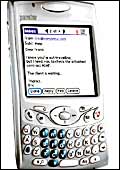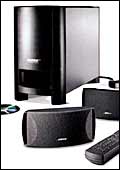|
Quick,
what's the one weightlifting exercise that works out the muscles
of your back, glutes (butt), forearms, shoulders, legs as well
the abdominals? It's the dead lift. You'll rarely find the dead
lift being done in gyms and that's a pity because it's probably
the most complete weight training exercise that you can do. It's
a compound exercise (more about that in a moment) that targets
many muscle groups across the lower and upper body. Around 75
per cent of the body's muscle groups are targeted by the dead
lift, making it in my view a real gem of an exercise.
Then why is it that you rarely see dudes
(and rarer still, dudettes) doing the dead lift? Reason one: the
dead lift is a tough exercise to perform and requires to be done
in really good form if you don't want to risk injury. Reason two:
trainers and instructors at most gyms don't do dead lifts themselves
so they don't recommend it!
Well, here's the gen on dead lifts and how
to do them. But first a word about compound exercises. Compared
to simple isolation exercises (say, biceps curls), compound movements
involve more muscle groups-the dead lift involves joints like
the ankles, knees, hips, the spine, shoulders as well as fingers.
As a result, the movement results in greater strength gains and
could also lead to bigger muscle growth.
How to do it: Place a weighted bar on the
floor and stand with your feet shoulder-width apart but with your
shoelaces below the bar. Now, bend down and grab the bar with
your grip just outside your thighs-one hand facing your body,
the other facing outward (see illustration). Your shins should
be grazing the bar; your knees should be flexed as in a full squat
position and your feet flat on the ground. Your shoulders need
to be held back and arms straight.
Take a deep breath and initiate the lift
by straightening your legs. As the bar reaches your knees, begin
exhaling and drive your hips forward to meet the bar, exhaling
while you do the lift. Throughout the movement, remember to keep
your stomach muscles taut, shoulders back (by squeezing the muscles
between the shoulder blades) and head up. That's one repetition.
For the second repetition, bend down once again, keeping your
arms straight and back naturally arched so that gravity allows
the bar to descend to the floor. Now, repeat the movement by pulling
the weight up again.
Precaution points: Your back must be flat
and not hunched throughout the movement; shoulders should be back
and the barbell held as close as possible to the shins in the
initial position and as close as possible to your thighs as it
passes the knees. Initiate the pull with your legs and not the
back and be sure to rest adequately between sets. The dead lift
can be exhausting on your muscles. But believe me it's probably
the most beneficial to them as well.
-Muscles Mani
write to musclesmani@intoday.com
Caveat:
The physical exercises described in Treadmill are not recommendations.
Readers should exercise caution and consult a physician before
attempting to follow any of these.
ALL
ABOUT DEPRESSION
You
are in a bad mood and it's one of those terrible days in the office.
You may ideally want to think of it as a passing phase, but if
you can't pull yourself together and feel better, you may be a
victim of depression.
What it is: Depression, the commonest psychiatric
disorder, is a "whole-body" illness, involving moods
and thoughts. It affects the way a person feels about oneself,
and thinks about things.
According to Prof. Nimesh G. Desai, Head
of Psychiatry, and Medical Superintendent at Delhi's Institute
of Human Behaviour & Allied Sciences (IHBAS), women are two
to three times more prone to depression than men. Hormonal factors
like menstrual cycle changes, pregnancy, among others, may be
the contributing factors.
What causes it: Depression can be biological
as well as genetic, triggered by psychological stress and social
circumstances. People who have low self-esteem or who are readily
overwhelmed by stress are more prone to depression. A chronic
illness, work stress, family crisis, or any unwelcome life change
can trigger a depressive episode.
Symptoms: Vary with individuals and also
over time. A depressed person feels persistently sad or anxious
("empty" mood), helpless, worthless and restless. In
extreme cases, one has thoughts of death or suicide.
Treatment: Some people with milder forms
of depression may do well with psychotherapy (supportive counselling,
problem solving, among others) alone. People with moderate to
severe depression most often benefit from antidepressants. Most,
especially those having suicidal thoughts, do best with combined
treatment: medication to gain relatively quick symptom relief
and psychotherapy to learn more effective ways to deal with problems.
Remember: antidepressants do not cure depression, they only help
you feel better by controlling certain symptoms.
-Roopali Joshi
PRINTED CIRCUIT
 Triple
Delight Triple
Delight
Samsung E Series
It's
tough being a reviewer in festive season. And companies like Samsung
make your job tougher by launching three phones in a day, with
similar names-E880, E530 and E730-and strikingly similar features
to match: 90-mb memory, mp3 player, Bluetooth, GPRS, one hour
video recording.... However, there are some differences: the E880
(Rs 14,999) has a soft-touch slide; the E530 (Rs 15,299) and E730
(Rs 16,449) both support seven regional languages, but the latter
has a better camera and at 88 gm, is easier to hive around. All
good phones, but the E730 looks the best bet.
 PDA
Reborn PDA
Reborn
PalmOne Treo 650
With
mobile phones increasingly resembling computers, personal digital
assistants (PDAs) were in danger of becoming extinct. But PDA
major Palm is taking on the Nokias and Ericssons with gusto, having
first released the Treo 600 mobile phone-cum-pda, and now an improved
Treo 650, which is a quad-band (800/900/ 1,800/1,900-Mhz) phone
that offers e-mail and ms-Office compatibility. However, unlike
the o2 xdaiii, SonyEricsson P900i or the Nokia 7710, it does not
have handwriting recognition. The redeeming feature: thanks to
the relatively light Palm OS, it doesn't crash as often as the
competition. The company has tied up with Hutch to offer these
handsets at Rs 29,999 (with a Bluetooth headset for free). Now,
if only you could mind those bills.
Home Delivery
Bose Cinemate
 Quick,
what's common between most cinema halls and the latest Lexus cars?
Actually, it's a Bose sound system. High prices may have deterred
you earlier from getting one for your home, but not any more.
Bose has introduced the Cinemate, an affordable home theatre system
at Rs 32,900 that consists of just two front speakers, an Acoustimass
module and a universal remote. The Acoustimass module delivers
dramatic effects without audible distortion and contains the amplification
for the system. And even without centre and rear speakers, Cinemate
helps your tv/dvd player combo produce a true cinematic experience.
Just four simple connections and you're ready. Quick,
what's common between most cinema halls and the latest Lexus cars?
Actually, it's a Bose sound system. High prices may have deterred
you earlier from getting one for your home, but not any more.
Bose has introduced the Cinemate, an affordable home theatre system
at Rs 32,900 that consists of just two front speakers, an Acoustimass
module and a universal remote. The Acoustimass module delivers
dramatic effects without audible distortion and contains the amplification
for the system. And even without centre and rear speakers, Cinemate
helps your tv/dvd player combo produce a true cinematic experience.
Just four simple connections and you're ready.
 Intelli-search Intelli-search
Clusty.com
Google
has competition. It's called Clusty.com. While the search engine
leader produces millions of unorganised results for a search,
Clusty organises the top 250 results into categories that make
sense. Regular netizens will recall a certain site called Teoma.com
(it's still around), which also sorts results into categories.
Clusty, though, goes further. Besides normal web search, it searches
news, images, shopping, wikipedia, blogs and jobs as well. Then,
it breaks up each category into sub-categories, so you needn't
grope around for the right keyword to search by. For instance,
a web search for "George Bush" returns a category called "Iraq",
which has a sub-category called "God told me to end tyranny".
It's what we call intelligent search.
-Compiled by Kushan Mitra
And Alokesh Bhattacharyya
|






 Triple
Delight
Triple
Delight PDA
Reborn
PDA
Reborn Q
Q Intelli-search
Intelli-search